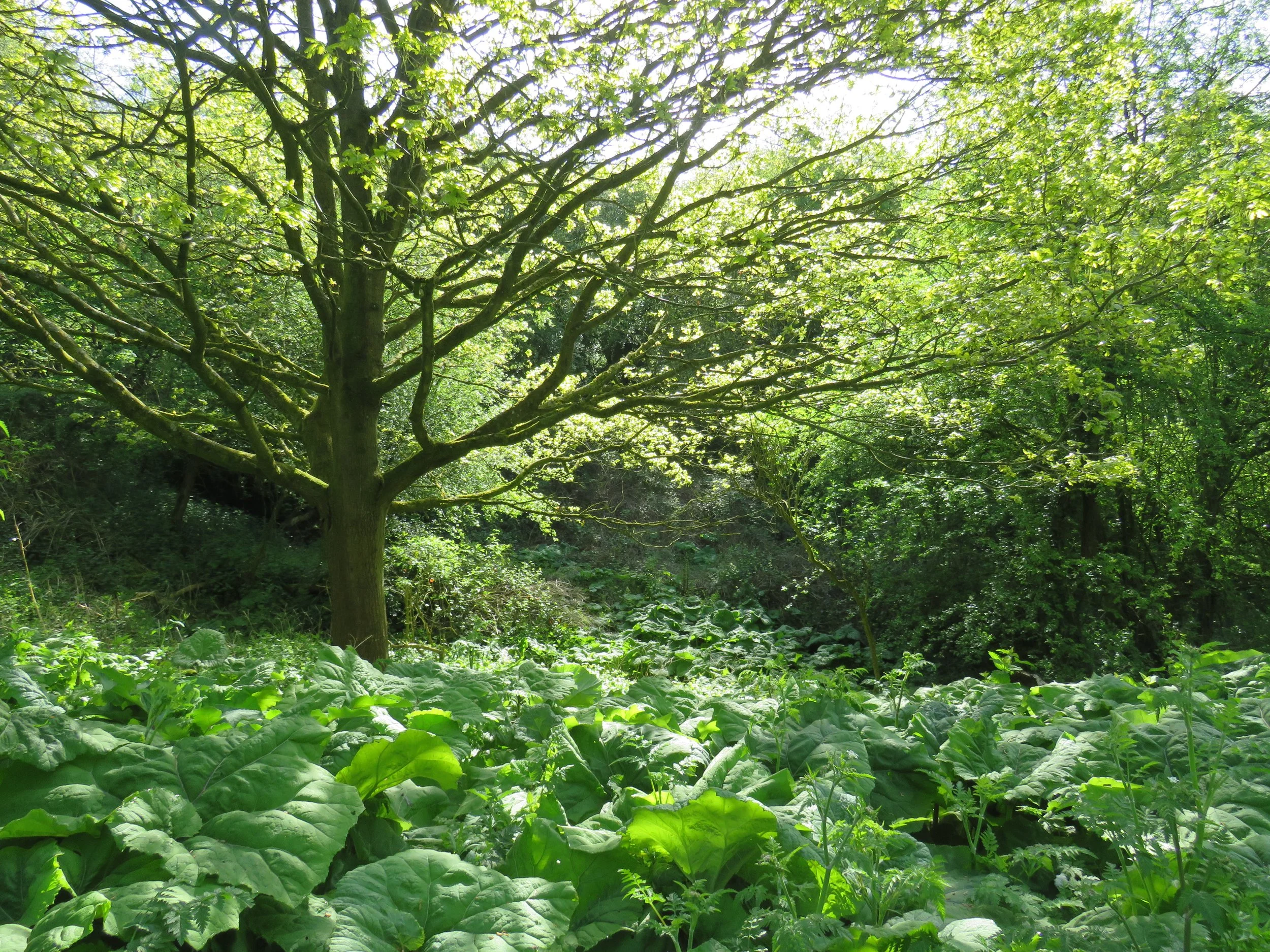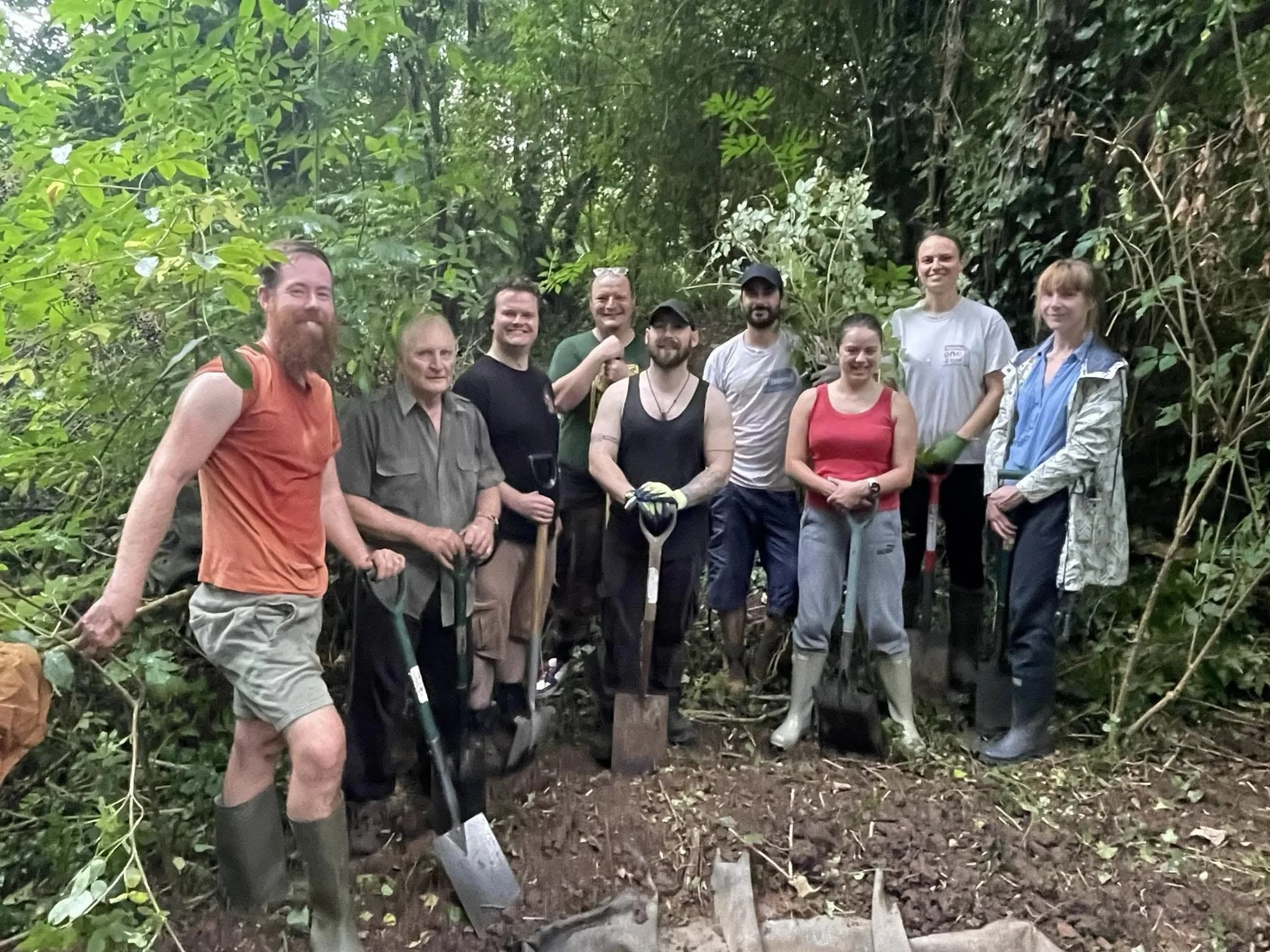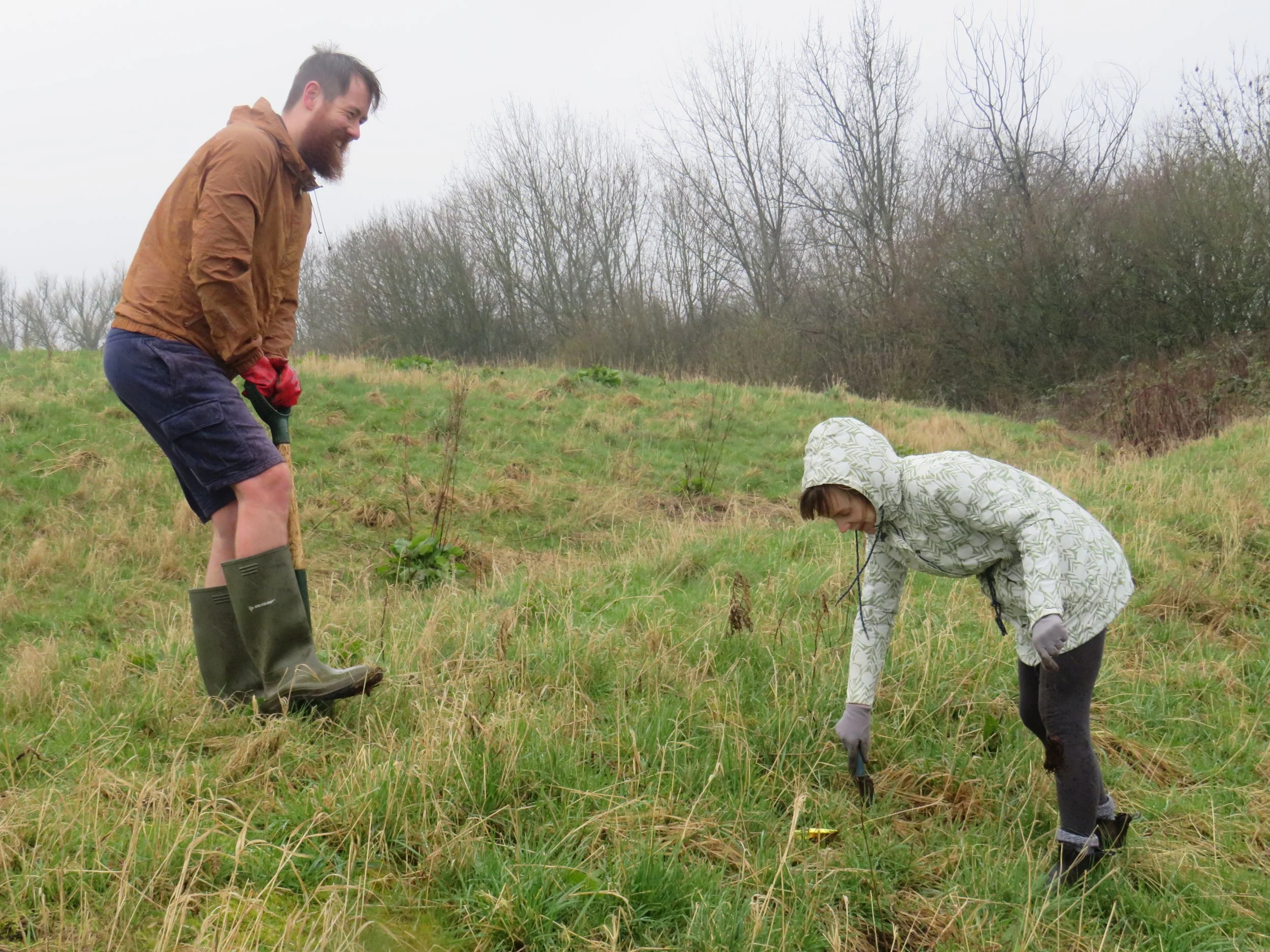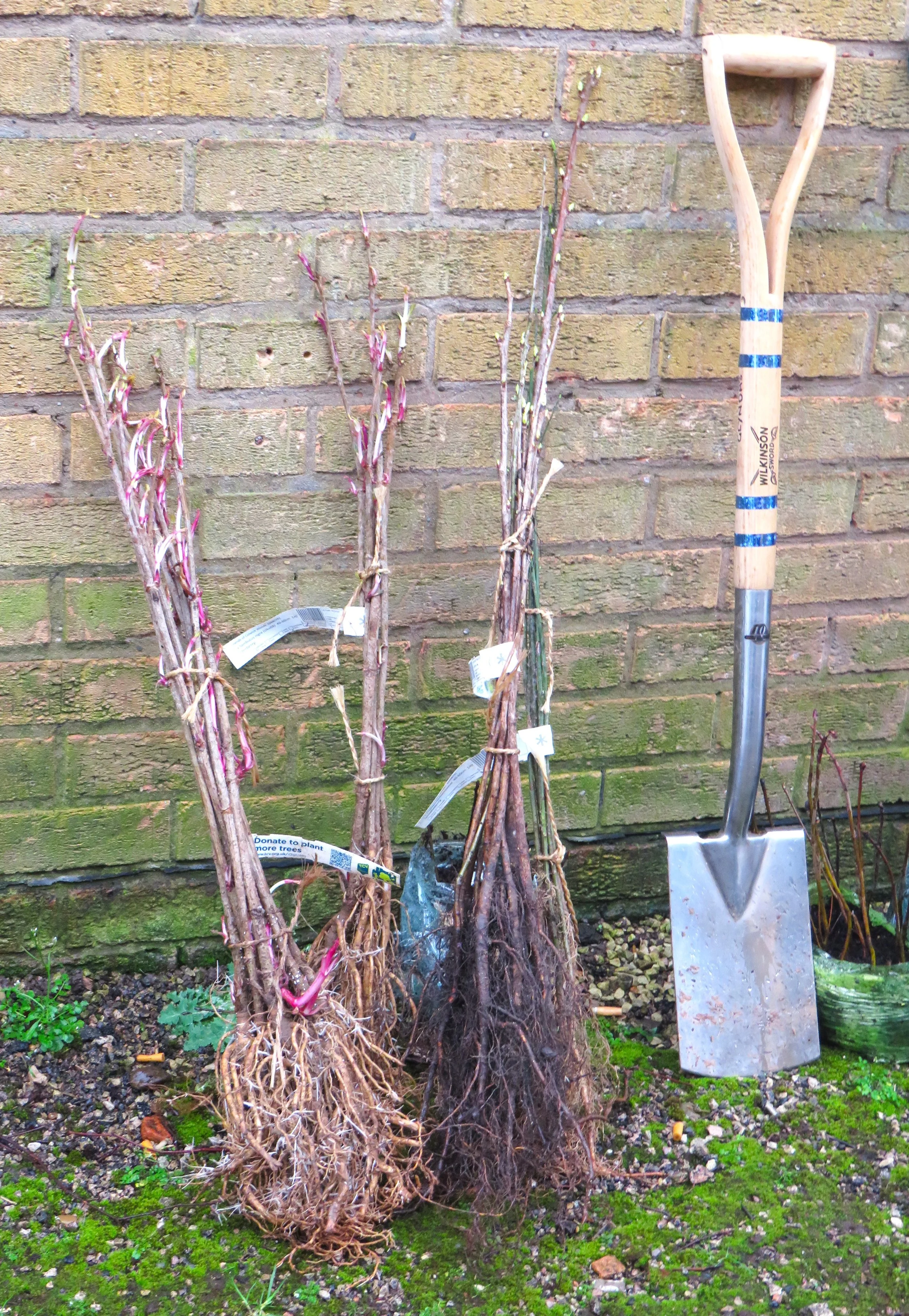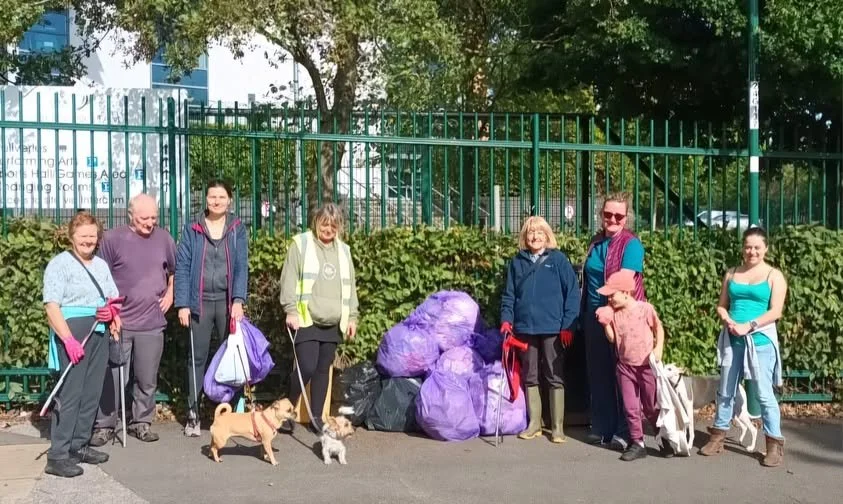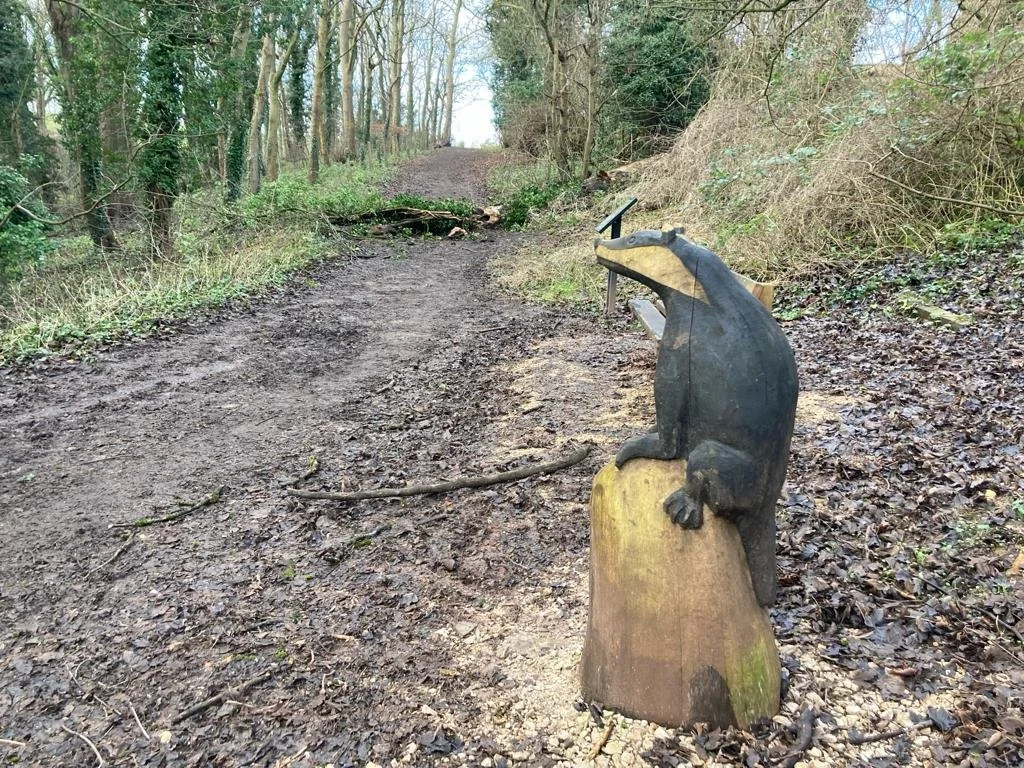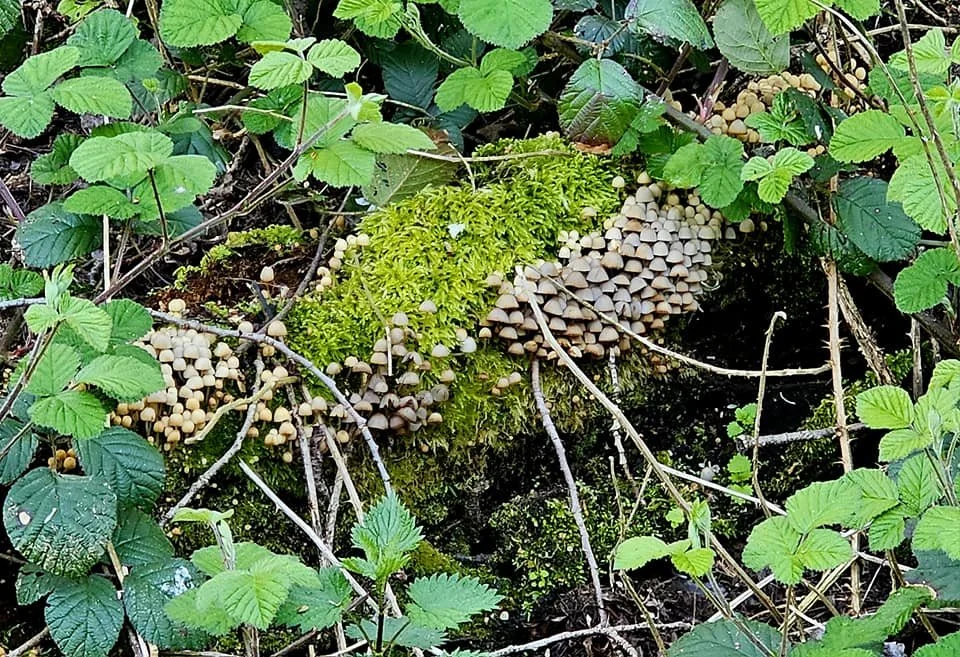Ellie Poole - The Friends of Colwick Woods
Interview with Ellie Poole, written by Andy Barrett
With Colwick Woods being perhaps the wildest natural space in the city, and only a fifteen-to-twenty-minute cycle ride away (or you can catch the 43 bus from the city centre) I thought it would be interesting to talk to Ellie Poole, Chair of the Friends of Colwick Woods, to discover the importance of a community volunteer group to the site, and how groups such as this operate.
For those who don’t know the woods, which for many generations were a natural playground for those who lived in the back-to-back housing of Sneinton, they are a natural treasure. The 50-hectare site, which was once part of Colwick Hall, is full of grasslands, ancient woodland, paths and valleys, dips and hollows. Within minutes you can be immersed in a rich and dense natural environment before surfacing to witness stunning panoramic views across the Trent Valley and city. And this green oasis is, in many ways, much as it has been over the past six hundred or so years.
Colwick Woods was designated as a geological Site of Special Scientific Interest in 1995, with its sandstone cliffs that are millions of years old, and following a local campaign to protest a housing development on the site it became a Local Nature Reserve in 2004. The Friends of Colwick Woods grew out of this campaign and is now in its twenty first year.
When did you first come across Colwick Woods, Ellie?
It was only about four or five years ago. Although I was born in Nottingham I was raised in Norfolk for twenty years before moving back here, and so didn’t have much connection or feeling of belonging to the city when I returned. I was living with my partner and we noticed this big area of green space on Google Maps not too far from where we lived and knew that we had to find out what it was. As soon as we found it I knew this was what I was looking for.
It just felt like I was in a completely different space. It's just you and the woods and greenery with the sounds of birds. It felt like I was back in Norfolk and I couldn’t believe that these woods were so close. From that moment on I've been going there nearly every week, sometimes much more than that.
And how did your relationship with the site progress from that moment?
After I’d been there a few times I saw a kestrel in a tree and thought this is quite magical. I'd never seen a bird of prey before and it was just so close to me, and that started a real love of birds. From then on I started going to the woods nearly every day, bright and early, just to feed them. I was giving out seed and suet and setting up makeshift feeding stations in the bushes and was really able to develop a relationship with them. I think I was feeling quite lonely at that time, so seeing the birds and being able to have a sense of repetition and routine, whilst also noticing the impact I was having on nature just really meant something to me.
I started to see if I could find anything about the site which is when I came across the Friends of Colwick Woods. I offered to give a talk on the birds in the woods, they said ‘come along’ and so I did that with my partner in a local pub, that has since been demolished. They asked if I would like to join the group’s committee, and last year I was appointed the chair. I can see my involvement with the group continuing for a long time; it’s very important to me.
What is the role and purpose of the Friends of Colwick Woods?
It’s to foster a sense of community and involvement in the site and to work with the council, who own the site, with its stewardship. It’s to improve the ecology of the woods where we can and to encourage community involvement, to make sure the woods can continue to thrive. We want to make sure that everything we do helps to improve the site as a natural space for foliage and fauna.
And how is it funded and managed?
It’s a not-for-profit organisation and the only sources of income we get are through fundraising. These are either GoFundMe projects that we advertise on our Facebook page, or grants that we apply for through schemes such as the National Lottery or the Co-op Local Community Fund scheme. The most recent grant came from Bupa who were running a green funding scheme. We are always on the lookout for programmes that may be offering money for tree planting, or putting up bird boxes, or anything like that. And we do sometimes get donations as well. All of that money is used to go towards regeneration and rewilding projects which is what we focus on, such as improvements to the ponds or looking after the bat boxes and other homes for nature that we’ve introduced.
There is no formal membership scheme, and we mainly communicate through Facebook and our website, with people coming along to volunteer their time or attend events on an ad hoc basis, although we do see a lot of familiar faces. If people want to become more engaged with the group then they can ask to join the committee which meets monthly to plan out activities. So, the administrative structure is reasonably informal.
When the group was first set up it perhaps had more of a community focus, and each year it would host a large public event that took a lot of time and energy to plan. These were really useful in drawing members to the group, who would pay a yearly membership and receive newsletters. But that didn’t necessarily translate into ongoing volunteer engagement in the woods, which is ultimately what we’re looking for. It’s fair to say that because of the change of focus we don’t have as large a group of people in the group as we once did, and over time we have lost some of those who were instrumental in setting up the group and who had such a rich knowledge of the woods.
Do you get a lot of volunteer support from the community?
It ebbs and flows really. During the summer we get a lot of engagement because of the good weather but in the winter, with the dark mornings, dark nights and the cold, it does die back a bit. We find that people always stay up to date with our social media posts and the advantage of using this is that they don’t have to go out of their way to discover what we're doing.
I do think that it is older people that perhaps have a stronger connection to the woods but there have been young people that have turned up at our events, many of whom have a good understanding of the site and that is something we want to develop. We held a talk in a local pub last year with Dr Linda Birkin which had a really good turnout and a lot of younger people, so there is clearly interest in the importance of green spaces like this in the city. And when we run different walks, looking for fungi or ‘wellness’ walks, we do have a real mix of people that turn up. There are a couple of secondary schools right next to the woods but they don’t use it at all, which does seem to be surprising given how much we know about the importance of green space to younger people.
We do know, just by talking to people that we see, that there is a huge love for the woods. If we did need to mobilise support for any real challenge, as when the group first started and three thousand people signed a petition against the threat of development, we are confident that the community would quickly come together.
What is your relationship with the city council and the networks of wildlife and ecological groups around the city?
We do have a good working relationship with the council which is really important. They have given us access to a small building on the site and I'm able to speak to their green space officers and biodiversity officers if we've any concerns or issues, such as with path access or fallen trees which is something they have to keep an eye on. If we do want to make any improvements, to build a pond or plant trees, we do have to ask permission so they can make sure it aligns with their management plans. They do share these with us although we’ve often found that if they carry out work, like planting trees or putting in steps or extending paths, they tend to just do it rather than approaching us first. There is probably a way for us to work together in a more balanced way and that’s something that we would like to improve in the future.
We also speak to the Nottinghamshire Wildlife Trust and to the Forestry Commission as well, just to keep an eye on the work they’re doing, or projects and workshops they might have coming up that we could get involved in or partner with. Then there are the smaller local groups and individuals who we like to work with, maybe by featuring them as a speaker at an event or to help us with any activities that we do.
And with the city council currently being so short of money has that impacted the amount of work that's being done, and the amount of work that is needed to be done by the group?
It has in a sense that the council don't really do anything physically to the woods, unless there's a public issue that's been reported such as fly tipping, fallen trees, or access around paths. Those are the things they focus on. They do make sure that the site is maintained and they are keeping an eye on it. I think that every year they go around with a biodiversity officer to keep track of the species and they do have ongoing management plans.
We know that if we want to plant trees or create bug hotels or dig ponds that the council aren't going to be in a position to help. So it is on us to make the proposals and have the money in our reserves to be able to fund it. The council do want these things to happen, but we have to back it up financially from our end if they’re going to approve the work going ahead. They don’t help us to do the work, that is all carried out by our volunteer teams, but they will come along to make sure that it's all gone ahead as planned and that we haven't done anything wrong.
That is why a community group like ours is so important, because we're able to fundraise and do the things that the council aren't currently able to. Volunteer groups clearly become vital to the health of green spaces when the owners of those spaces do not have the resources to care for them in the way that they should and in the way that is needed.
I'm imagining that if I was interested in setting up a community group to help care for a green space I would be concerned about the amount of potential bureaucracy involved in dealing with the council. But you seem to be saying that it’s reasonably straight forward?
That is what I have found. A previous chair of the group sat down with them to talk through this whole process of how you get permission to make material changes to a site and to simplify that as much as possible. That has probably helped us, so I think having those kinds of conversations early on are probably really important. We’ve found that if you’ve got a good idea and show why it will be of benefit in the location in which you are planning the work, alongside having the funding and volunteer support in place, the council will approve it.
If you are going to do larger projects, such as pond digging, then you will need to complete a risk assessment for the council. We use our own but they can provide you with a template. We don’t have to provide one for smaller projects, like planting or installing bat and bird boxes, but I’m not sure if that would be the case for everyone. I do know that we can’t get involved with the kind of work that requires heavy machinery.
We obviously require public liability insurance and we’ve had the same provider since the group was set up. The yearly cost for that isn’t perhaps as much as you might think. If you run a community group you know there are certain costs – insurance, website hosting – that you are going to have to cover every year, and so you have to keep that in mind when you are raising funds. We’ve always been in the situation where insurance costs haven’t taken up a big percentage of what we have in our pot. So don’t let it put you off!
How do you approach your fund raising?
Our fundraising activities operate in two main ways. One route is through crowd funding specific and discrete projects as I’ve mentioned, and we advertise those through social media. The other route is face-to-face. We will hold open days or small-scale nature activity events where we try and engage with the local community and those who are using the woods. We’ll share information on the project we're working towards and ask people if they would like to donate. We’ve discovered that if people see us out and about, if they can see that we are making an effort and really do care for the woods, if they can see where their money is going and speak to us on a personal level, they’re much happier to financially support a particular project.
What projects have you run through this fundraising?
We’ve put up twenty-four bird boxes across the woods in different sites, along with a number of bat boxes, two owl boxes, and one kestrel box. We’ve worked on two pond projects; digging out pond areas, lining them, filling them back in and then making sure they’re full of water.
There have been tree planting projects that have meant we’ve introduced about four hundred trees to the site, alongside bulb and native flower planting. Alongside these more ecological focussed projects we’ve also put up What3Words location signs across the woods. These are to help alert emergency services, or friends and family, to your location if you get lost or stuck in the woods and don't know where you are.
What kind of activities that the group has run are most popular with the community?
I think the most popular ones are the activities where people can get involved in doing something meaningful, where they can actually see the results of their efforts. The regular monthly litter picks often get quite a nice following; it’s a bit of a routine for people and they can see they’re helping to make the woods a cleaner space. The more active work that we do, planting trees or digging a pond, is something that people join in with not just because they want to do some good for the woods, but perhaps because there's not much opportunity in their local community to be able to do this kind of hands-on activity.
We ran a bat walk a year or two ago with the Nottinghamshire Bat Group which was really popular, with a lot more people coming than we’d envisaged. It really did prove that people have a thirst to see nature, not just on their television screens but in their neighbourhood and those that came were absolutely thrilled by what they saw. We were planning on running one this Halloween but the bats are hibernating now, which seems unfortunate timing!
And are there any challenges that you’ve had to deal with, that have meant taking on a more aggressive or activist stance?
There was a diesel generator that was installed near the phone mast that's towards the middle of the woods. The electrical system that had been used to power it was damaged when some wire was stolen, and because the mast is located on a small plot of land that the council don't own it was put there without them or us knowing about it. We found that it was creating a really big disturbance to the nature and wildlife. The bats had left, and that had been a key location for them up to that point; and the woodpeckers and other birds which had been nesting around there stopped doing so.
It took me about a year to find out who the owners were, but when I had and explained the situation to them, we thankfully didn't have to escalate it too much. They removed the diesel generator and put back the electrical supply and that has had a big impact on that pocket of the woods. So, it does show you the importance of having this kind of community stewardship.
Companies often work in a top-down way, they don’t always think about the environment when they’re making planning decisions and whoever made the decision about the generator probably had no idea about the negative impact it would have. That's why it needs local people to tell them if something isn’t acceptable and needs to be changed. If we get enough people from the public to say that they don't appreciate or agree with a decision that is clearly having a detrimental effect to a local green space, then those decisions can be overturned.
We’ve just discovered that Network Rail are planning to clear all woody vegetation within 6.5m alongside certain areas of the railway track. Although this won’t mean cutting down trees in the woods, it is nearby and will negatively impact a natural corridor that leads into the woods and which is a vital strip of green land that provides shelter and passage for birds, bats, badgers and other wildlife. Obviously work like this has to be done but again we want transparency and evidence when it comes to making decisions like this. We want to see Network Rail’s ecological surveys for badgers, birds, bats and other wildlife. We want to see a detailed map of the planned works. We want them to publish a mitigation plan explaining how they will protect wildlife during and after the clearance. And we want to ensure that any work that might disturb badger setts must be properly licensed and carried out at the right time, and that the work avoids the nesting season.
There haven’t been any threats of building development in the past year or two but I can imagine that at some point in the future it will be something that we need to look at. Obviously the group began through a campaign to overturn a planning decision and what might have been a housing development is now an area of the woods that has been opened up with a new path and wooden sculptures that have been installed by the council. There have been struggles before over potential car parking areas for the school, and the installation of a sports playing area, which was negotiated in return for some land which now is a really popular site for people to look across the west of the city.
Have you had to learn a lot to take on this position?
I think the learning has just been natural to me and I've taken it in my stride. I don't see it as, ‘oh, I have to learn this and that’ to be able to enjoy the woods or to be a member of the group. I just want to learn about the natural world. I want to be able to find out what this type of mushroom is that's growing in the woods; or I want to know what this bird is that's singing to me. I don't think it's been a hard task. I've enjoyed it! Every day you spend in the woods, if you really want to, you start to learn more things.
I know you've only been engaged with woods for a few years but have they changed over that time?
I think they have. We’ve noticed a change, for instance, just through putting in the bird boxes. There are a lot more birds around, they're nesting more and there’s been an increase in the larger birds that we see. We've got more owls and another kestrel has been spotted which means we now have two! There are more trees, planted by ourselves and the council. Some of the paths have become more overgrown, which is something we need to keep an eye on and which some people are concerned about.
But also environmentally things are changing. The temperature is getting hotter and we’ve noticed the grass has been getting really dry during the summers. There’s an increased need for water on the site, because there aren’t any large streams and the smaller birds really struggle in the very hot weather. There have been times when we’ve had to take water up to the woods on a regular basis, to help them and the general lack of water is one of the key challenges in terms of supporting the wildlife in the woods. We’re also very concerned about the possibility of fires, and have been running fire patrols during the summer. You can also see the changes in the leaves on the trees, and the berries have ripened a lot earlier this year. The more time you spend in the woods the more you get to see the trends and the differences.
Has your relationship to the woods changed?
I think it has. At the beginning I very much had my usual route that I stuck to as I walked around, perhaps like many people. But since becoming chair I need to have more of a knowledge of the whole site. I need to know what Colwick Woods is, how much of it there is to explore and understand, because it does have a lot of varied landscapes within it. I think I now know pretty much every inch of the woods but there’s always more to discover and learn.
I do still feed the birds as I used to when I first started to visit, and although its not as often I still have that love for the original thing that brought me to the group. But now I need to also see the opportunities in the woods; the areas that need improvement or maybe some support. And now there are possibilities open to me, knowing that through the group we have the ability to make change and to help the site. I don't just see the woods as what it is, I also see it for what it could become.
And why is it an ecologically important site?
It's got really ancient woodland with pockets that are over 500 years old. These are really important for certain types of birds and wildlife, because we don't have that type of rich diversity in and around the city. The grasslands are important too, and there are a huge number of plants and insects that the woods support. We run regular Survey Sundays where anyone can come along and using iNaturalist we can build up a record of the diversity of the site. One of our most recent finds was something called a silk button spangle gall wasp. They are tiny wasps which lay their eggs on oak leaves, and in response the tree forms tiny silk-edged button-like galls on the underside of their leaves where the larvae develop.
Do you think it could attract more people? Do you think it's hidden away?
Yes, it is in many ways and there are a lot of people who live nearby who I’m sure would benefit from visiting who currently don’t come. I know that during Covid it became very important and that was when many people discovered the woods and started to feel more connected to the environment and nature.
I often see dog walkers and older people, but also school kids and students that have come up from the city. There was a group of younger people that I met during the summer solstice that had come out to watch the sunset on the longest day of the year, which shows that people do have that sense of connection to the natural world and that perhaps we need to help reawaken a little more. But it’s not as popular as Colwick Park and the lakes, which is where a lot of people go. The parking is better there and there are paved paths, whereas the terrain at the woods is rougher so it’s very difficult for wheelchairs and push chairs.
And what do you think is possible in terms of the return of nature to that site?
I think what's possible is that we can help cultivate and maintain the rich and diverse pockets of the woods by being aware of them. We have to know the landscape in detail so that we can make sure we have the management plans in place to ensure the habitats are healthy and diverse and support the wildlife that we have. We need that knowledge to help the woods to thrive.
Luckily we have a couple of people that have been here for a long time, who have knowledge of the grasslands and the ways of water, of how the ecology has been in the past and how it's changing. But this kind of knowledge is shared and we have to speak to different members of the public to find out what has been there in the past, alongside what is important to them and what is important to the woods. And that knowledge also comes from being out and about, in seeing it right now as it is; to look at what's there and ask ourselves what can we bring to this space that will help nature. That is really the question that you have to bring to the woods. If there's something that doesn't seem right, if there's an overcrowding of brambles or not enough hollow bits of wood for the wildlife, then maybe there’s something we can do to improve the situation.
The council, maybe for budgetary reasons, are also more focused on the ecology of the woods rather than public engagement. But it is a nature reserve, a reserve for nature and that's why we're here, to protect and preserve. It's not a country park like the nearby lakes. There are definitely different management styles and ways of looking after public green spaces. I think we're striking a good balance in being focused on the woods for nature's sake whilst also wanting to involve people in helping us achieve the aims that we do have.
If people don't know Colwick Woods, why should they come and explore the site?
It's a breath of fresh air, literally. You're not going to find anywhere else like this within walking distance or within a short bus journey. It’s somewhere you can go and feel like you're in a completely different environment. It does so much good for your mental health to be out in nature and in the peace and quiet. And you never know who you might meet; a dog walker or even an animal, maybe a deer or a badger that makes you appreciate life in a different way. The woods have definitely helped me through a lot. I feel as though I’m part of something really special.


